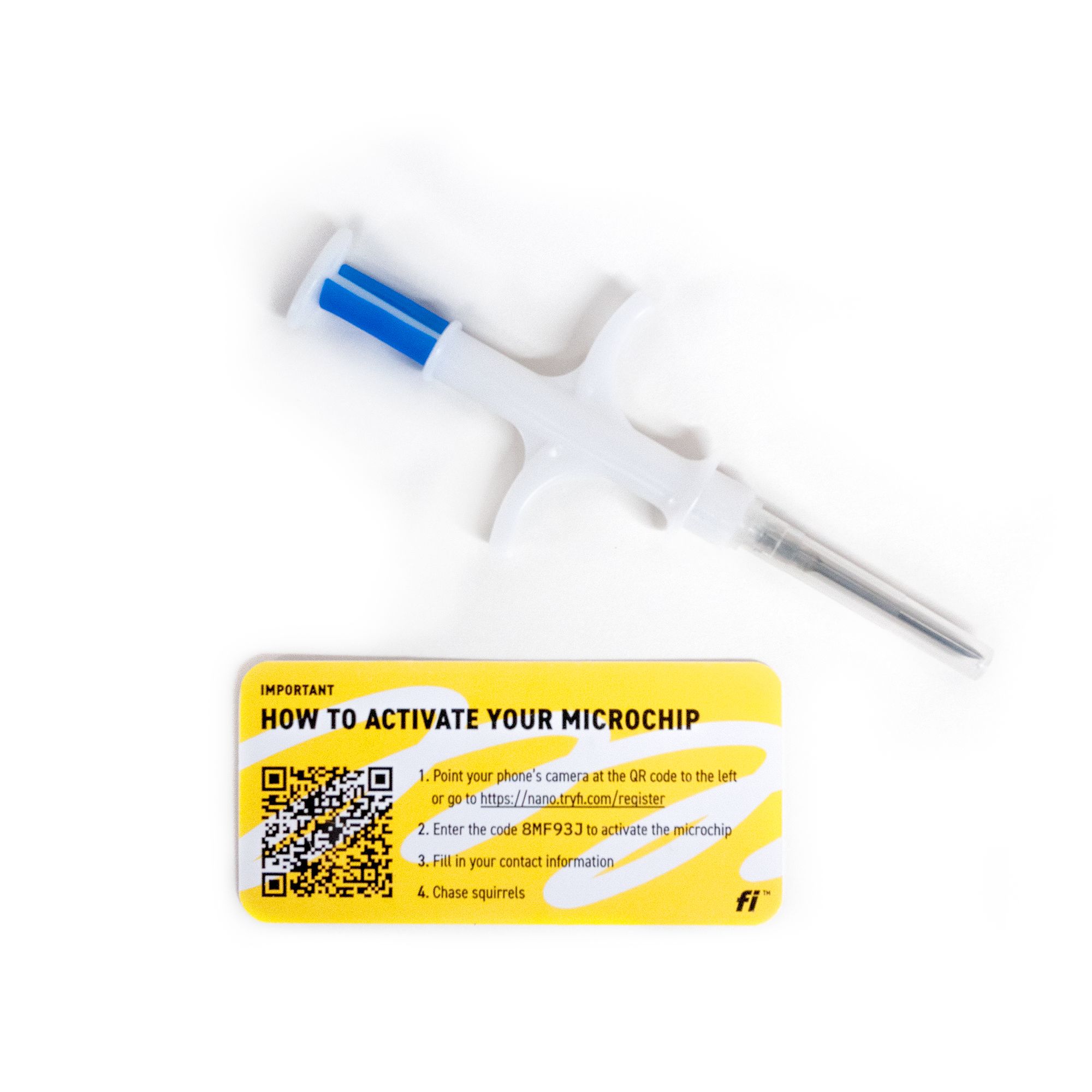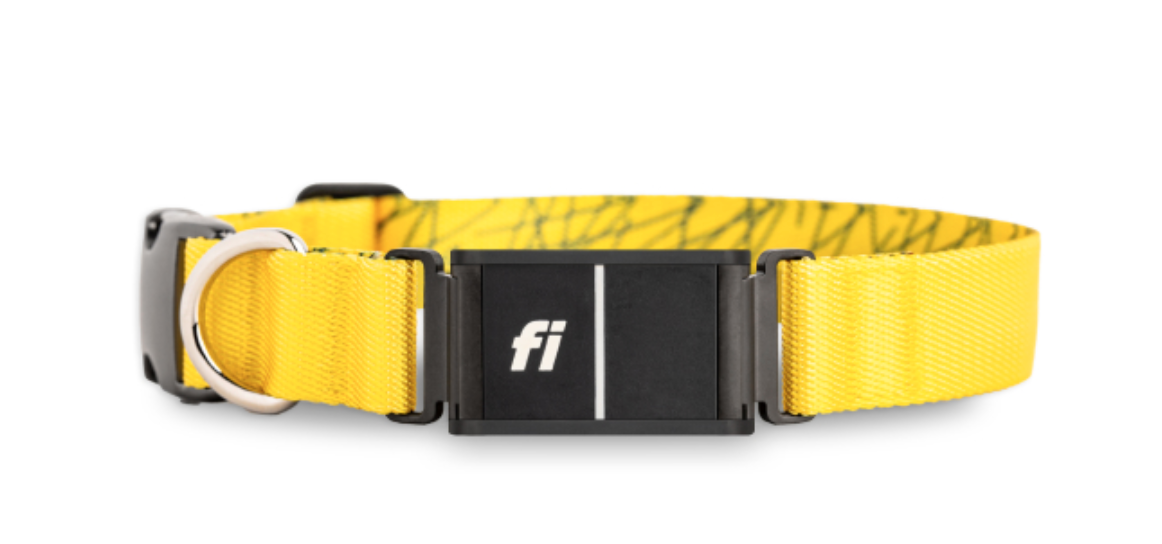It’s not uncommon for owners to have a microchip implanted in their dogs. In fact, most vets recommend microchipping your dog so they can be tracked if they ever get lost.
While the procedure for implanting a microchip is quite simple, some owners worry that they may be able to see or feel the microchip once it’s in. So, what’s the deal? Can you feel the microchip in a dog?
No, you usually can’t feel a microchip once if it has been properly inserted between your dog’s shoulder blades. The chip is deliberately inserted in a way that it stays in place and doesn’t cause any discomfort for your dog.
There are some occasions, however, where a microchip moves around. When this happens, you may be able to feel the chip but this is rare.

Where is a Microchip Inserted?
Microchips are usually placed between the shoulder blades. Over time, it will settle into the skin, which protects it from harm and prevents your dog from feeling it.
How is a Microchip Inserted?
Microchips are inserted between your dog's shoulders with a needle and syringe. The procedure for inserting a chip is quick and relatively painless. While many dogs get their microchips while they go for spay or neuter surgery, a dog doesn’t need an anesthetic to have one placed.
It is placed at this time to ensure that the dog doesn’t feel the insertion. Since they are already under anesthetic for their surgery, it is an easy time to insert a microchip in a dog as well.
Where to Have the Microchip Implanted
When it comes time to have your dog microchipped, you'll have some options for where you can get the procedure done. Your veterinarian, a clinic, or a shelter are all good choices.

How Big is a Dog Microchip?
Microchips are tiny and approximately the same size of a grain of rice. This makes them hard to see and feel in most dogs. Sometimes you can feel a microchip in toy-sized dogs due to their size. If you do, it will feel like a tiny lump under the skin.
Can Microchips Move After They are Implanted?
Yes, microchips can move after they are implanted. If you have found a lump between your dog’s shoulder blades, this is a likely culprit. Microchips aren’t tethered to any part of your dog, so sometimes they can relocate themselves.
Microchip movement isn’t something to worry about. Your dog probably doesn’t even notice it because it is as big as a grain of rice. Vets know that microchips sometimes travel, so they wave microchip scanners all over a dog’s body to ensure they don’t miss finding it.
Are There Side Effects from Microchip Insertions?
It’s very rare for a dog to have any side effects from a microchip insertion. There could be minor bleeding at the injection site, temporary hair loss, or an infection, but this is extremely rare. There should be no lump or anything visual from being microchipped. Contact your veterinarian if your dog has any skin or coat changes after getting a microchip implanted.
Here are some stats to give some perspective on how rare side effects are. The British Small Animal Veterinary Association has over 4 million microchip implantations documented. Since 1996, only 391 of those were reported to have side effects. This amounts to 0.0001% of microchip insertions.

How Do You Know if a Dog is Microchipped?
If you have a small dog with thin skin, you may be able to locate the microchip under their skin. You can definitely try and feel around for it, but don’t expect that you’ll find a lump.
The only surefire way to know if a dog has a microchip is to use a microchip scanner. The scanner is waved over a dog’s shoulder blades. If the dog has a chip, the microchip number will show up.
Scanning Process
Most vet offices and pet shelters have microchip scanners to help reunite pet owners with lost pets. The catch is whether the owner has kept the registry updated with their current information. The registration acts as a way to show identification that the pet belongs to the pet owner.
Once the microchip number is found from a scan of the chip, the number is entered into the registration database. From the database, they can find the owner's phone number and email and they can reach out to them.
How Do Microchips Work?
Microchipping works a bit like an internal collar and tags. The main difference is that the microchip is internal and cannot be misplaced. Once the chip is in, it is recommended that it stays in the animal. Dog owners do not need to worry about making sure they have put a collar and tags on their pet. Although, it is highly recommended that a collar and tag still be used.
Microchips have a serial number that is attached to a registry. When the chip is scanned, a serial number will show up. Each brand of microchip holds it’s own registry, but the serial number on the chip is registered with the owner’s information at the time the microchipping is done.
Problems with Microchip Registries
The biggest issue with microchips is that registries often don’t contain updated owner information. Most brands require a fee to keep your information updated or to change information if you change your contact information.
The presence of an annual fee or a fee to change information means that most owners don’t pay to change it. The unfortunate result is that if a dog is lost, the owner can’t be located.
The Fi Nano
Fi microchips are the one exception. While Fi is known for their GPS dog tracking collars, they also offer a free microchip registry. Unlike other brands, you don’t pay to keep your information updated in their microchip registry.
Your information will always be up to date and available if your dog gets lost. They also make it easy to update your information as needed by giving you a handy QR code to scan for access.

How Much Does a Dog Microchip Cost?
The cost of a dog microchip depends on the type of chip and where you get it done. In general, they usually cost between $20-$30 to purchase, and then the insertion price varies where you can get it done.
You can read more about the costs here.

Can You Remove or Change a Dog’s Microchip?
Technically, yes, you can have a microchip removed or changed, but it’s not recommended. Doing so would require a risky surgical procedure. Microchips are intended to be a permanent installation. They are embedded into your dog’s skin and tissues and should stay implanted.
Even if you can find the exact location of your dog’s microchip through an x-ray, it will still require exploratory surgery under anesthesia to remove it.
Most vets will refuse to do surgery to remove a microchip. It is very expensive and puts your dog at unnecessary risk. If you want to change your dog’s microchip, the best thing to do is deactivate the original chip and insert a second one.
How Do You Deactivate a Microchip?
When we say deactivate a microchip, we don’t mean that you can prevent a chip from scanning. However, you can digitally deactivate it so that your contact information are no longer connected with the serial number on the chip.
This can be done by contacting the company that made your chip and that holds your microchip’s registry. They can tell you the exact steps to take to have your contact information removed.

What If My Dog Has a Microchip from a Previous Owner?
When you are adopting a dog, it’s common to have a microchip already registered to someone else. The first step to changing the registration is to find the serial number attached to the chip.
If you have the opportunity to contact the registry along with the previous owner, this is the easiest way to change the information, but this isn’t always possible.
In most cases, you will need to enlist the assistance of your vet or the shelter you are adopting from to change the information on your dog’s chip. They can find out which company you need to contact and help you update the dog’s information.
Other options besides microchipping
If microchipping does not feel like something you would like to get done for your pet, there are of course the options of having your dog wear a collar and tag with your information on it.
If you have an animal that does like to leave your home area, you could certainly try a GPS collar on your pet. The Fi GPS Smart Collar will alert you when your pet leaves the home area as well as allow you to track their location.

Takeaways
Most of the time, you can’t feel your dog’s microchip because it is the size of a grain of rice.
If you can feel the microchip in a dog, don’t panic. Your dog probably doesn’t notice.
The best way to confirm the presence of a chip is to have the dog scanned using a microchip scanner at a vet or shelter.
Microchips sometimes travel within a dog’s body, which isn’t a cause for concern.
Microchips are useless if the registry information isn’t kept up to date.
Fi offers a free microchip registry with no fees.
For more helpful articles about pet-parenting tips, check out the Off Leash blog at TryFi.com.
Want to know more about TryFi.com? The Fi Dog Collar is a GPS tracking collar that not only keeps track of your dog’s location, activity levels, and sleep patterns, but it also alerts you if your dog escapes your backyard. This is the fastest way to find your dog after an escape. Try the Fi Dog Collar today!

